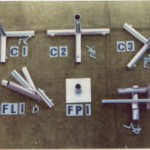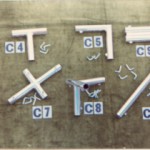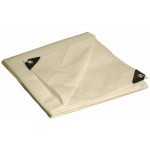In researching my feelings of aloneness, I came upon a novel idea, called Solace.
In skimming a mostly academic book on Solace, called Solace by Paul Horton, he explains the concept behinds Solace in his mind. Since I only skimmed this book, I’ll give you my take on what he is saying, but can’t really say that it is what he meant.
Solace is the process by which we as humans calm ourselves in times of pain.
It is a process that starts when we are born and suckle at our mothers breast, before we actually have cognition that there is such as things as a split between ourselves and our mother. At that young age, all we know is that when our body tells us something is lacking, something (our mother we later realize) helps makes the pain go away.
As our cognitive functioning grows, and we come to realize that we exist, apart from our mother, and that our mother can’t always be there to comfort us, we transfer our object of solace to other things that remind us of the mother, such as a soft blanket, pacifier, stuffed animal, or other favorite toy.
As we continue to grow in cognition, we continue to transfer the solacing object to other objects, experiences, and people, and bring them to play in our life.
Thinking about things, it would explain why some people like to sing, or to listen to music.
His book ends at development about age 34, and he doesn’t get into what we do after that (I just bought his next book… so we’ll see what he says), but I will guess that we learn how to internalize solace. Meaning that we learn that the solacing object is not external to us, rather internal to us, which it has been the whole time, but we were too immature to realize it!
To clarify this past paragraph, the whole time that we are children, we think that the solacing object is outside of ourselves, so we use that object internally to provide solace. As we grow, we realize that in fact we might as well skip the step and provide our own internal solace.
One important exercise that comes from this is to ask yourself, what brings you solace, and how solace feels to you. As always, knowing a truth about ourselves, can add value no matter how we institute it in our life. And this is a truth that we must know and recognize.
I know for me, when I hold certain objects from my youth and when I sing I find solace. I also now find solace in spending time alone in nature, away from all the burdens of the world. I also self solace by biting my nails and rubbing my neck – as any body language observer or good poker player will identify as a tell.
To take this an apply it to one aspect of loneliness, which is how I originally found the idea, in the book Positive Solitude by Rae Andre, I would guess that part of the emptiness that we feel when we are lonely, is from the fact that (by definition) we do not have a solacing object around to help us. We know something is missing, since from birth we were trained to have a solacing object when we nursed, and now we are left as adults with no solacing object around to help us feel whole.
As adults we go off to transfer the solace that we want upon another, and take a lover, so we can transfer the solacing power of our mother onto them. However, we can now see that this is only a band-aid, since the lover is very much external to ourselves, and they come and go, or at a minimum we feel closer and farther away from them from time to time.
To really rid ourselves of loneliness then, we must learn to self-solace (which we can do by focusing on the internal parent child relationship) and then the pain of loneliness will fade away as we learn that the object of solace is none other than ourselves, and we have been there the whole time.





